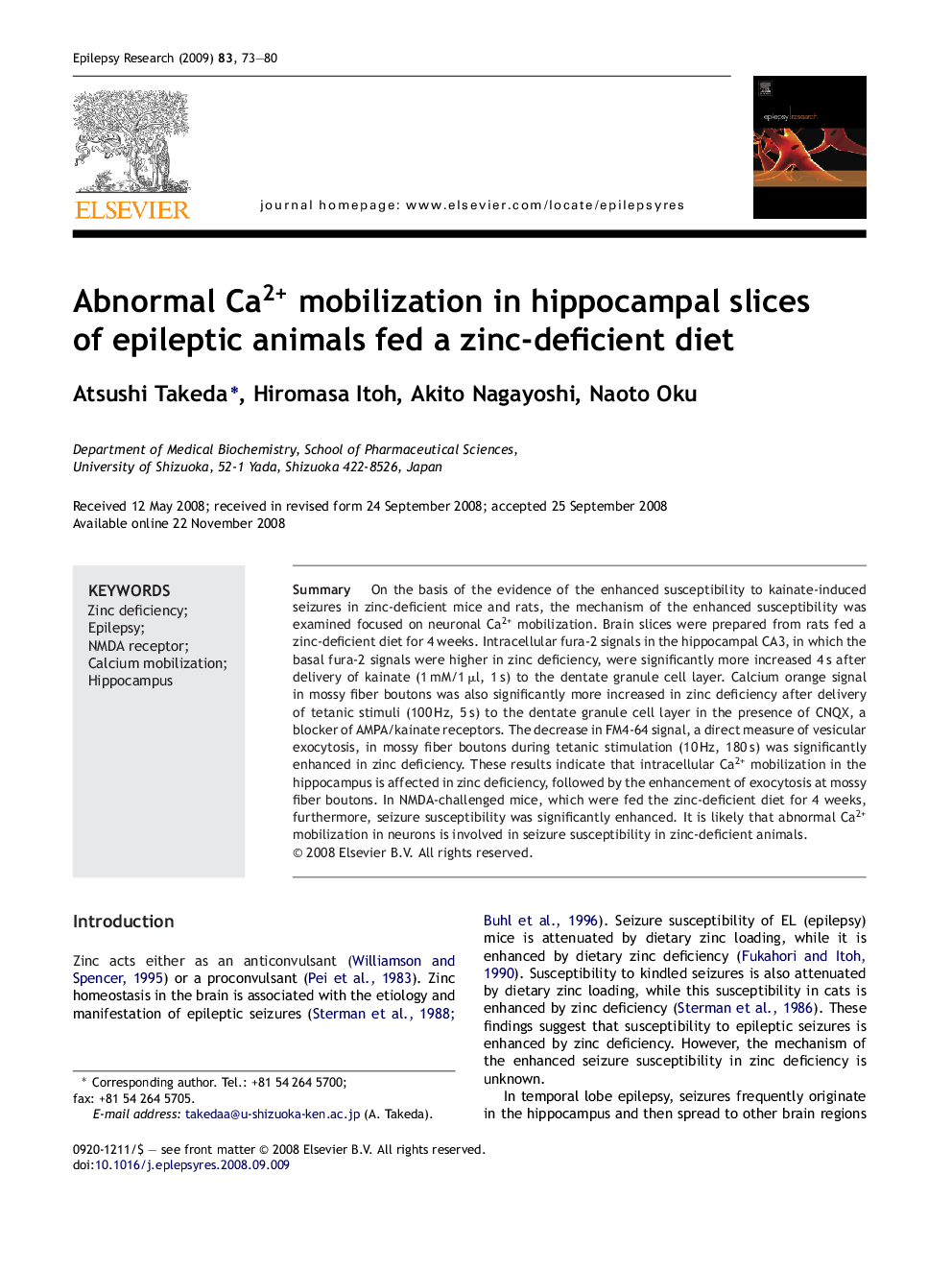| Article ID | Journal | Published Year | Pages | File Type |
|---|---|---|---|---|
| 3052744 | Epilepsy Research | 2009 | 8 Pages |
SummaryOn the basis of the evidence of the enhanced susceptibility to kainate-induced seizures in zinc-deficient mice and rats, the mechanism of the enhanced susceptibility was examined focused on neuronal Ca2+ mobilization. Brain slices were prepared from rats fed a zinc-deficient diet for 4 weeks. Intracellular fura-2 signals in the hippocampal CA3, in which the basal fura-2 signals were higher in zinc deficiency, were significantly more increased 4 s after delivery of kainate (1 mM/1 μl, 1 s) to the dentate granule cell layer. Calcium orange signal in mossy fiber boutons was also significantly more increased in zinc deficiency after delivery of tetanic stimuli (100 Hz, 5 s) to the dentate granule cell layer in the presence of CNQX, a blocker of AMPA/kainate receptors. The decrease in FM4-64 signal, a direct measure of vesicular exocytosis, in mossy fiber boutons during tetanic stimulation (10 Hz, 180 s) was significantly enhanced in zinc deficiency. These results indicate that intracellular Ca2+ mobilization in the hippocampus is affected in zinc deficiency, followed by the enhancement of exocytosis at mossy fiber boutons. In NMDA-challenged mice, which were fed the zinc-deficient diet for 4 weeks, furthermore, seizure susceptibility was significantly enhanced. It is likely that abnormal Ca2+ mobilization in neurons is involved in seizure susceptibility in zinc-deficient animals.
